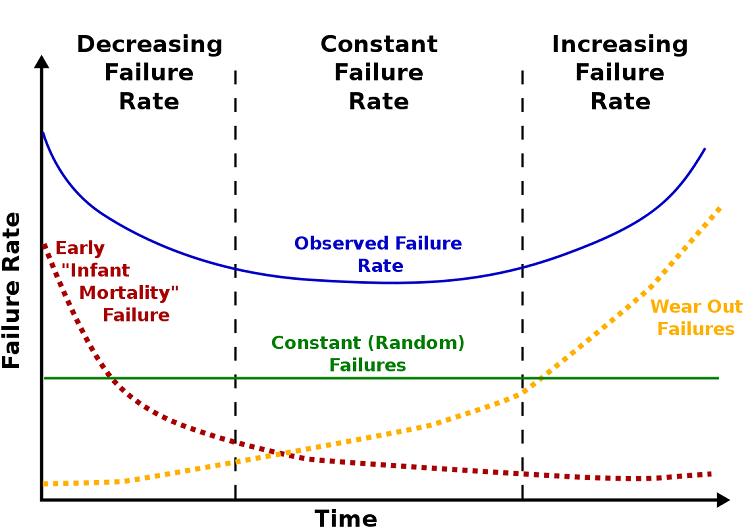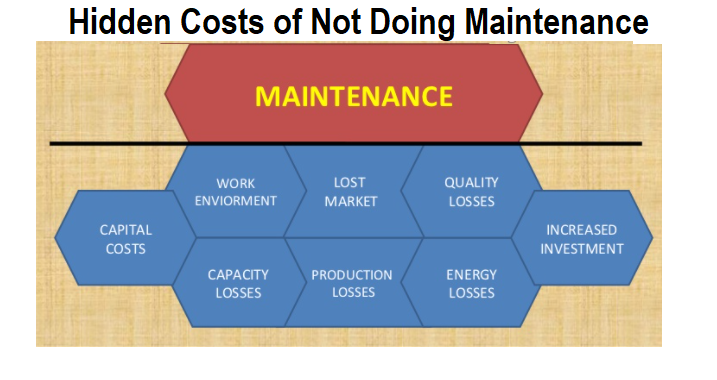Maintenance management is now mandatory part of any facility management system. In fact maintenance management is not to repair broken equipment instead it is an approach to keep the equipment running at high capacity and produce quality output or efficiency at lowest cost possible.
Long back the manufacturing and production work was done with relatively simple technical equipment and with the involvement of more manpower. At that time maintenance was of course simple and it was having impact to certain extent to the function of machines.
During the industrialization, production equipment and other facility buildings has been more developed. In connection with the high technical development the impact of productivity and quality has moved from man to machine and computers. Therefore the importance of preventive maintenance has considerably increased.
Importance of Maintenance Management
Maintenance management is becoming more and more important due to many reasons. In developing countries , where many old machines are operating, the spare part problem are arising.
Some times it is difficult to find spare parts for equipment and if it is possible to find them.
Even if spare parts are available it is usually very expensive especially when import is involved in foreign currencies.
Also due to long lead times of supply of spares, it is common that the spare part inventory is growing bigger than necessary.
A very essential part in maintenance management is developing countries to reduce the need of spare parts, as well as to maintain the minimum level of spares stock to save foreign currency, but still keeping the productivity high.
Preventive and corrective maintenance needs to be considered at very early stage i.e. when selecting and procuring new equipment to ensure a good and cheap operation and maintenance.
Because high quality equipment will give high reliability and maintainability which secures high productivity and equipment efficiency.
Life Cycle Cost of Equipment’s
The lifetime of the equipment can be split up in six phases
- Idea
- Specification
- Design
- Procurement(Manufacturing)
- Operation
- Windup
The bath tub curve describes the cost of equipment over its lifespan. From commissioning to winding up.

Life cycle cost is commonly understood to be the customer’s total cost and other sacrifice during the actual life time of the equipment/machine.
Hence life cycle cost includes the acquisition cost as well as all future costs for operation, maintenance and support of the product until it is finally discarded.
Analyzing the life cycle of an equipment helps:
- Comparison of alternative products.
- Improvements of products.
- Adaptation of the maintenance and support organization.
Objectives of Maintenance Management System
During the many years the maintenance function has not been seen as a condition for production output.
This is old approach that maintenance is the necessary evil, one among the unnecessary cost generators in the organization.
Very often the maintenance strategy in plants has been to reduce the maintenance cost as much as possible without thinking of the consequences.
Objective of the maintenance activity is , as priority one , to ensure the availability and performance of the equipment for maximum time. Hence production department buys availability and performance from maintenance department. Other objectives may include:
- Minimizing the loss of productive time
- Reduce the repair time and cost
- Minimize the loss due to production stoppages
- Maximize efficiency
- To improve quality
A poor maintenance management system can have many drawbacks like:
- Production capacity go idle
- Production costs go up
- Product and service quality will deteriorate
- Employee and customer safety might have to be compromised
- Customer satisfaction may take a beating
In summary the objective of good maintenance team is to keep up the planned availability and performance, at the lowest cost and above all within the safety and quality requirements.
MAINTENANCE WICH IS NOT CARRIED OUT, WILL COST EVEN MORE THAN MONEY !!!!!!
The maintenance cost can be split up in two different categories.
Direct maintenance costs: The costs are directly related to the performance of the maintenance works.
- Wages & Salaries
- Material Costs

- Administration Costs
- Costs for training
- Spare parts costs
- Contracted work forces
- Modification Costs
Indirect maintenance costs: Losses due to maintenance
Loss of revenue or other losses as a result of interruption to production as a result of maintenance.
Measurement of Maintenance Management System Performance
Many times there are needs to measure the maintenance management efficiency. However, maintenance can not be measured by the cost itself instead there must be some connection to the production out put in some way.
It is naturally impossible to determine anything about the size of the direct costs. One method to control the direct maintenance is to use the PM-factor.
”P” stands for prime product produce and “M” stands for maintenance cost. When using the PM-factor, the result of the maintenance impact on the production is measured.
How many products are produced per a 1000 units of “maintenance money”.
PM – Factor = Prime Production x 1000 / Maintenance Cost